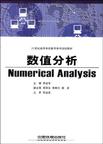数值分析
出版时间:2007-8 出版社:中国铁道出版社 作者:苏岐芳 主编 页数:309 字数:401000
内容概要
本书介绍了科学计算中常用数值分析的基础理论及计算机实现方法。主要内容包括:误差分析、插值、函数逼近、数值积分和数值微分、非线性方程的数值解法、线性方程组的直接解法、线性方程组的迭代解法、常微分方程的数值解法及相应的上机实验内容等。
各章都配有大量的习题及上机实验题目,并附有部分习题的参考答案及数学专业软件 Mathematica和Matlab的简介。
本书采用中、英两种语言编写,适合作为数学、计算机和其他理工类各专业本科“数值分析(计算方法)”双语课程的教材或参考用书,也可供从事科学计算的相关技术人员参考。
书籍目录
1 Error Analysis
1.1 Introduction
1.2 Sources of Erro
1.3 Erro and Significant Digits
1.4 Error Propagation
1.5 Qualitative Analysis and Control of Erro
1.5.1 Ill-condition Problem and Condition Number
1.5.2 The Stability of Algorithm
1.5.3 The Control of Erro
1.6 Computer Experiments
1.6.1 Functio Needed in The Experiments by Mathematica
1.6.2 Experiments by Mathematica
1.6.3 Functio Needed in The Experiments by Matlab
1.6.4 Experiments by Matlab
2 Interpolating
2.1 Introduction
2.2 Basic Concepts
2.3 Lagrange Interpolation
2.3.1 Linear and Parabolic Interpolation
2.3.2 Lagrange Interpolation Polynomial
2.3.3 Interpolation Remainder and Error Estimate
2.4 Divided-differences and Newton Interpolation
2.5 Differences and Newton Difference Formulae
2.5.1 Differences
2.5.2 Newton Difference Formulae
2.6 Hermite Interpolation
2.7 Piecewise Low Degree Interpolation
2.7.1 Ill-posed Properties of High Degree Interpolation
2.7.2 Piecewise Linear Interpolation
2.7.3 Piecewise Interpolation of Hermite with Degree Three
2.8 Cubic Spline Interpolation
2.8.1 Definition of Cubic Spline
2.8.2 The Cotruction of Cubic Spline
2.9 Computer Experiments
2.9.1 Functio Needed in The Experiments by Mathematica
2.9.2 Experiments by Mathematica
3 Best Approximation
3.1 Introduction
3.2 Norms
3.2.1 Vector Norms
3.2.2 Matrix Norms
3.3 Spectral Radius
3.4 Best Linear Approximation
3.4.1 Basic Concepts and Theories
3.4.2 Best Linear Approximation
3.5 Discrete Least Squares Approximation
3.6 Least Squares Approximation and Orthogonal Polynomials
3.7 Computer Experiments
3.7.1 Functio Needed in The Experiments by Mathematica
3.7.2 Experiments by Mathematica
3.7.3 Functio Needed in The Experiments by Matlab
3.7.4 Experiments by Matlab
4 Numerical Integration and Differentiation
4.1 Introduction
4.2 Interpolatory Quadratures
4.2.1 Interpolatory Quadratures
4.2.2 Degree of Accuracy
4.3 Newton-Cotes Quadrature Formula
4.4 Composite Quadrature Formula
4.4.1 Composite Trapezoidal Rule
4.4.2 Composite Simpson's Rule
4.5 Romberg Integration
4.5.1 Recuive Trapezoidal Rule
4.5.2 Romberg Algorithm
4.5.3 Richardson's Extrapolation
4.6 Gaussian Quadrature Formula
4.7 Numerical Differentiation
4.7.1 Numerical Differentiation
4.7.2 Differentiation Polynomial Interpolation
4.7.3 Richardson's Extrapolation
4.8 Computer Experiments
4.8.1 Functio Needed in The Experiments by Mathematica
4.8.2 Experiments by Mathematica
4.8.3 Experiments by Matlab
5 Solution of Nonlinear Equatio
5.1 Introduction
5.2 Basic Theories
5.3 Bisection Method
5.4 Iterative Method and Its Convergence
5.4.1 Fixed Point and Iteration
5.4.2 Global Convergence
5.4.3 Local Convergence
5.4.4 Order of Convergence
5.5 Accelerating Convergence
5.6 Newton's Method
5.6.1 Newton's Method and Its Convergence
5.6.2 Reduced Newton Method and Newton's Descent Method
5.6.3 The Case of Multiple Roots
5.7 Secant Method and Muller Method
5.7.1 Secant Method
5.7.2 Muller Method
5.8 Systems of Nonlinear Equatio
5.9 Computer Experiments
5.9.1 Functio Needed in The Experiments by Mathematica
5.9.2 Experiments by Mathematica
5.9.3 Experiments by Matlab
6 Direct Methods for Solving Linear Systems
6.1 Introduction
6.2 Gaussian Elimination
6.2.1 Basic Gaussian Elimination
6.2.2 Triangular Decomposition
6.3 Gaussian Elimination with Column Pivoting
6.4 Methods of The Triangular Decomposition
6.4.1 The Direct Methods of The Triangular Decomposition
6.4.2 The Square Root Method
6.4.3 The Speedup Method
6.5 Analysis of Round-off Erro
6.5.1 Condition Number
6.5.2 Iterative Refinement
6.6 Computer Experiments
6.6.1 Functio Needed in The Experiments by Mathematica
6.6.2 Experiments by Mathematica
6.6.3 Functio Needed in The Experiments by Matlab
6.6.4 Experiments by Matlab
7 Iterative Techniques for Solving Linear Systems
7.1 Introduction
7.2 Basic Iterative Methods
7.2.1 Jacobi Method
7.2.2 Gauss-Seidel Method
7.2.3 SOR Method .
7.3 Iterative Method Convergence
7.3.1 Basic Theorems
7.3.2 Some Special Systems of Equatio
7.4 Computer Experiments
7.4.1 Functio Needed in The Experiments by Mathematica
7.4.2 Experiments by Mathematica
8 Numerical Solution of Ordinary Differential Equatio
8.1 Introduction
8.2 The Existence and Uniqueness of Solutio
8.3 Taylor-Series Method
8.4 Euler's Method
8.5 Single-step Methods
8.5.1 Single-step Methods
8.5.2 Local Truncation Error
8.6 Runge-Kutta Methods
8.6.1 Second-Order Runge-Kutta Method
8.6.2 Fourth-Order Runge-Kutta Method
8.7 Multistep Methods
8.7.1 General Formulas of Multistep Methods
8.7.2 Adams Explicit and Implicit Formulas
8.8 Systems and Higher-Order Differential Equatio
8.8.1 Vector Notation
8.8.2 Taylor-Series Method for Systems
8.8.3 Fourth-Order Runge-Kutta Formula for Systems
8.9 Computer Experiments
8.9.1 Functio Needed in The Experiments by Mathematica
8.9.2 Experiments by Mathematica
附录
附录A Mathematica基本操作
附录B Matlab基本操作
附录C Awe to Selected Problems
参考文献
图书封面
评论、评分、阅读与下载
用户评论 (总计0条)
相关图书
- 微型计算机原理与接口技术学习指导
- 物流基础
- 医学影像实用技术教程
- 网页设计与制作
- 铁路隧道检测技术手册
- 理论力学
- 大学信息技术基础实验指导(21世纪高校计算机系列规划教材)
- 全国高职高专计算机系列教材·计算机应用基础
- 全国高等医药类院校计算机规划教材·医学多媒体实用技术教程
- 调车区长
- 变分法基础及其在固体力学中的应用
- 产业生态化理论与政策研究
- 高等学校计算机基础教育规划教材·Visual Basic程序设计
- 现代麻醉诊断治疗学
- Visual Basic程序设计教程(21世纪高校计算机系列规划教材) (其他)
- 可视化程序设计:Visual Basic教程 (平装)
- 高职高专计算机系列教材·网络设备应用技术
- 软件工程
- 多媒体CAI课件设计与制作导论
- 大学计算机基础 (其他)
- 机械工程材料及选用
- 桥梁支座
- 中国铁路自然灾害及其防治
- 建设工程材料及施工试验知识问答
- 上海优秀勘察设计
